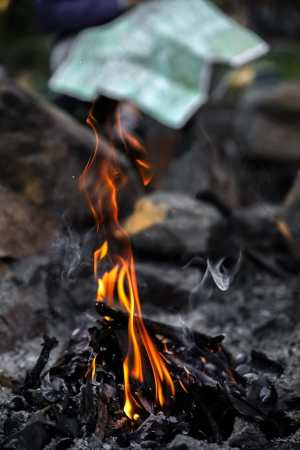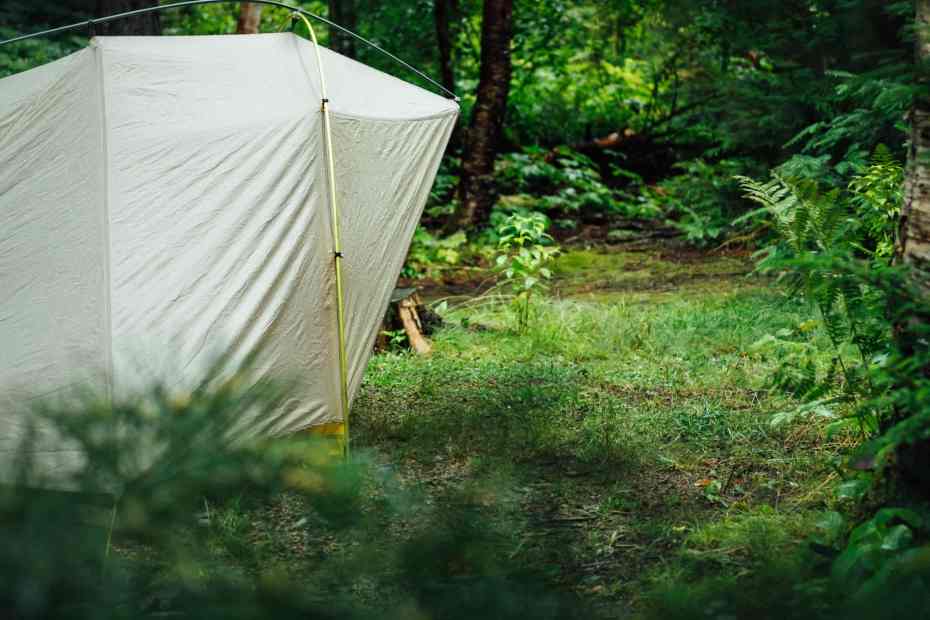Table of Contents
What is Leave No Trace?
Leave No Trace (LNT) is an ethical principle that was originally developed for backcountry camping but became a general outdoor code of ethics. Leave No Trace is defined by seven principles that are related to how one should conduct themselves outdoors.
If you care about the outdoors and the future of our planet, you should strongly support the Leave No Trace initiative. You’ll make the world a better place that you will be able to enjoy for years to come. You’ll feel a sense of accomplishment every time you practice Leave No Trace, and your grandchildren will thank you too!

The purpose of Leave No Trace is simple. As the name suggests, you want to leave no trace when you are participating in outdoor recreation. To get a better understanding of why you have to look at the number of people that interact with the wilderness. In the EU, more than 23 million people go camping at least once every year. In the US, a survey reveals that there are 77 million campers in any given year. If every single one of these people left just one piece of garbage at their campsites, we’d have 100 million pieces of garbage that weren’t there before.
With this many people enjoying the outdoors every year, it is essential that we do our part to preserve it. If no one collected the garbage in your home every week, you’d be living in filth within a month. The same applies to camping and outdoor recreation, except multiplied If everyone stopped following the Leave No Trace principles, we’d lose all of our campsites in less than a year.
It is up to all of us to make sure we leave this planet better than we found it. We are the stewards of the Earth.
Leave No Trace camping should be your go-to method whenever you think about spending some time outdoors. Read on to find out how you can start today.
How did Leaving No Trace Start?
The exact start date is unknown, but it was started sometime in the 1960s and 1970s. Households in America saw an uptick in camping as a past time due to technological advancement. We developed gas stoves, synthetic tents, and sleeping pads which made it easier to spend time outdoors. Other than these items, visiting a national park was a cheap experience for you and your family. People flocked to outdoor recreation and it became a national pastime.
Anticipating the lasting effects of increased visitors, the United States government started the program still in use today. Specifically, Leave No Trace was developed by three United States government organizations; The United States Forest Service, The Bureau of Land Management, and the National Park Service. Together these three departments created a pamphlet titled “Leave No Trace Land Ethics”. The pamphlet contained the seven principles used to preserve and protect the environment.
Since the creation of the pamphlet, Leave No Trace has reached a worldwide audience. People follow the seven principles and apply them to different activities, ecosystems, and environments.
Non-profit organizations centered around Leave No Trace have formed in order to educate people about their impact on nature. These organizations focus on Leave No Trace in order for you to learn how to minimize and prevent your own ecological footprint.
What are the Seven Leave No Trace Principles?
1 – Plan Ahead and Prepare
This means a lot of things. Let’s start with the basics.

Pack food that has minimal waste and impact on the environment. No wrappers or excess packaging. You won’t have to worry about disposing of excess waste if you don’t bring any, to begin with.
Prepare for hazards with the appropriate emergency gear so you don’t have to disturb the environment.
Learn about the specifics of your campsite in advance. Does it have any special concerns? Will you need to bring extra equipment? For example, if you didn’t know that your campsite has rough terrain, you might be forced to dig into the ground to set up your tent. Proper planning helps you take care of any unexpected situations in advance.
If you plan ahead, you will be ready for any situations you may encounter and can focus on environmental preservation.
2 – Travel & camp on durable surfaces
When you’re picking your campsite, you are less likely to make an impact if you pick a durable surface. Setting up camp on a soft patch of ground by a riverbed can cause the ground to erode. If you set up on a rock, there’s a smaller chance that you will leave a long-term effect. You can make up for the discomfort by properly planning ahead and bringing comfortable sleeping gear. Make sure you’re at least 200 feet from any lakes and streams and pick areas with minimal vegetation.
When it comes to traveling, try not to disturb the wildlife. Take well-traveled paths so that you know it’s okay. If one person takes a shortcut through the underbrush, there won’t be any lasting effects. If 100 million people do it, then the landscape will be permanently changed. Always walk in a single file line when in groups and avoid places where impacts have just begun.
3 – Dispose of waste properly
 It’s impossible to have 0% waste when traveling outdoors, so it is important to take care of what you bring. Always inspect your site for accidental trash or spills. Pack everything away when you’re done with it so that animals can’t access anything. Do your best to leave your site cleaner than you found it.
It’s impossible to have 0% waste when traveling outdoors, so it is important to take care of what you bring. Always inspect your site for accidental trash or spills. Pack everything away when you’re done with it so that animals can’t access anything. Do your best to leave your site cleaner than you found it.
Make sure to properly cover any human waste. Animals often rely on droppings and scents to determine their territory and routes. Unfamiliar feces can seriously disrupt a lot of wildlife habits and cause irreparable damage.
Use biodegradable products only. This includes things like soaps and toilet paper.
4 – Leave what you find
It may be tempting to take home a souvenir. A cool rock or a vial of dirt to bring back and show your friends and family. Unfortunately, if millions of people do this every year, there won’t be anything left! This is why it’s important to leave anything you find where you left it.
You should be able to create plenty of memories and mementos by taking photographs. Bring a camera with plenty of batteries so you can look back at the photographs in the years to come. These memories will last a lifetime and you can store them digitally for easy access.
You also shouldn’t change anything even if you’re not taking it with you. Don’t build any structures or dig any trenches. NEVER bring any non-native species into an area.
5 – Minimize campfire impacts
 Campfires are an integral part of your camping experience. The image of sitting by a campfire, telling stories, and eating food are synonymous with any mention of camping. However, a campfire can also be extremely dangerous to the natural order of things.
Campfires are an integral part of your camping experience. The image of sitting by a campfire, telling stories, and eating food are synonymous with any mention of camping. However, a campfire can also be extremely dangerous to the natural order of things.
Keep your campfires small and well-controlled to avoid forest fires. If you use small pieces of wood that can be broken by hand, it will be easy to deal with if things get out of hand. Never use wood that you’ve brought from home because it could introduce non-native pests and diseases to the environment.
When ready for bed, make sure that your campfire is properly extinguished so there’s no chance of it reigniting. Make sure all the wood has burnt to ash, pour water on it, and wait for it to cool. Once fully cooled off, scatter the ashes to be completely sure.
6 – Respect wildlife
This one for your safety as well as the safety of the environment. Never approach an animal even if it looks cute or friendly. You never know if an animal will activate its instincts of fight or flight, or if it’s protecting the young.
Learn to appreciate wildlife from afar. Don’t feed them because they might learn to not fear humans. If an animal gets too comfortable, they could be fine with rummaging around your campsite. When this occurs, the animal might have to be put down and no one will get to see it again. Additionally, the food you provide could also be damaging to their health or alter their behaviors.
7 – Be considerate of other visitors
Finally, remember that you are not the first or the last person that will visit a site. Even if you are not there at the same time as others, you should always keep this in mind. Mind your noise levels, yield to others on trails, don’t set up camp too close to other people.
Always keep in mind the impact of your actions on the next visitors, and for future generations. Millions of small actions add up over time, so anything you do to the environment will have a lasting effect for years to come.
By sticking to these seven principles for Leave No Trace, you’ll help to preserve our planet for years to come.
Check out our article Camping Advice for Beginners so you can begin following the Leave No Trace principles too.
